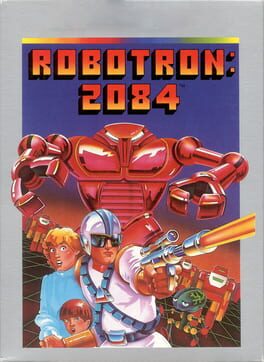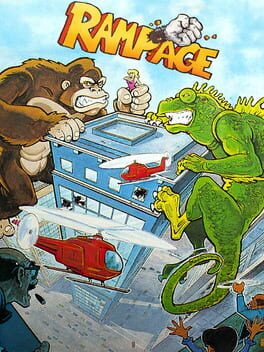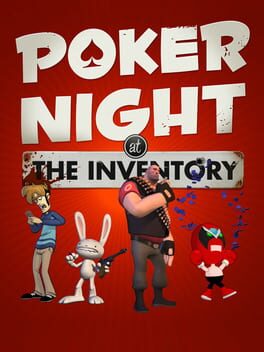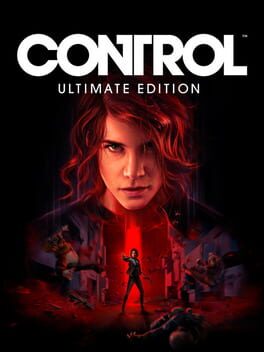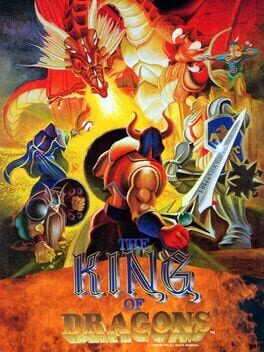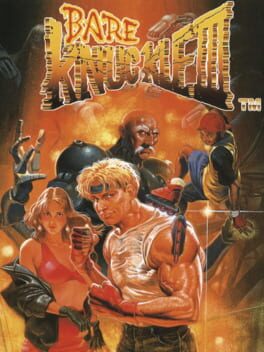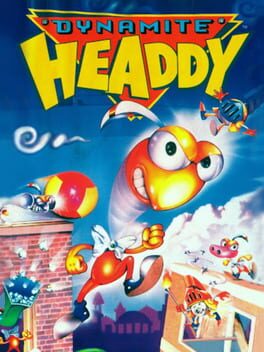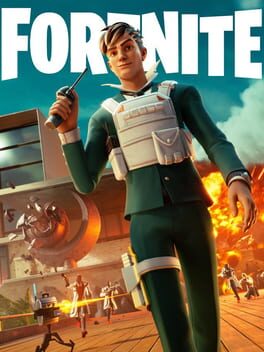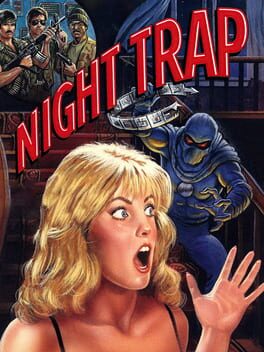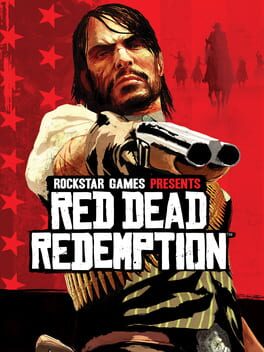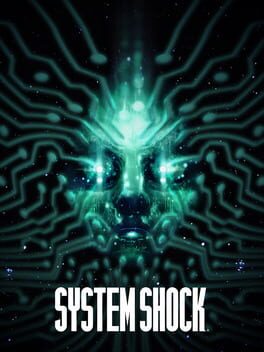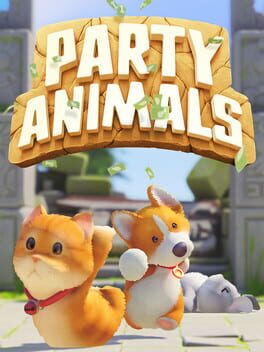NutzBerzerk
BACKER
1998
1982
Played via the Midway Arcade Origins collection on Xbox 360
A good majority of my pre-1990s game knowledge is second-hand because I haven't liked a majority of the games I've played before that era, but god DAMN if Robotron isn't a cut above its contemporaries. While not the first twin-stick shooter to make it to market, it's understandable why Robotron is as highly regarded and remembered as opposed to its predecessors in the genre. I will certainly return for more robot-blasting action in the future, be it through this exact collection or any other versions I may take a gander at in the future.
I frankly couldn't imagine trying to play any console port made before the existence of twin-stick controls, though.
A good majority of my pre-1990s game knowledge is second-hand because I haven't liked a majority of the games I've played before that era, but god DAMN if Robotron isn't a cut above its contemporaries. While not the first twin-stick shooter to make it to market, it's understandable why Robotron is as highly regarded and remembered as opposed to its predecessors in the genre. I will certainly return for more robot-blasting action in the future, be it through this exact collection or any other versions I may take a gander at in the future.
I frankly couldn't imagine trying to play any console port made before the existence of twin-stick controls, though.
1986
Wrote a full review of this on my website covering 7th generation gaming
shameless plug shameless plug shameless plug
shameless plug shameless plug shameless plug
I was one of the unfortunate people who attempted to put up with Control's horrid 8th-generation console ports around its original release. Attempting to play on a base PS4 system, Control was frankly miserable to trudge through and I am frankly surprised I made it as close as I did before I couldn't handle the performance any longer (mission 8 of 10 if you're curious). I told myself I would play through Control again when I had access to better hardware, so what better way to experience Control than intentionally playing the weakest of the 9th gen console versions (Series S) and seeing how that fairs?
Though the resolution and overall picture quality are iffy on Xbox Series S, the performance is solid and rarely had any noticeable drops from 60FPS; a bare minimum for a game that is as frantic and challenging as it is. I was honestly just wanting to get through Control's story as swiftly as possible since a friend has "digitally lent" me Alan Wake II and I wanted to play some of the more connective material in this "Remedy Expanded Universe" or whatever they are calling it. Needless to say, before engaging with any of the expansion content, Control is a solid shooter with that Batman Arkham-esque map design and upgrade gathering to traverse new areas and search for all sorts of goodies. Control doesn't reinvent the wheel with its game structure and loop, but distinguishes itself enough in flow, pacing, and of course, its narrative and art design; said narrative and design were also strong enough to pique my girlfriend's interest, who normally goes for "cozier" or pick-up-and-play experiences aside from 10+ hour narrative excursions unless I play with her.
The last thing I can think of to distinguish this release from the original is the new accessibility features. As someone with a debilitating right-hand injury, it's nice when I can "take the load off" from as many thumb stick movements and mashing. It's appreciated that Remedy offered some adjustable auto-aim options to take a bit of the load off my right hand while still being able to make the game challenging.
Though the resolution and overall picture quality are iffy on Xbox Series S, the performance is solid and rarely had any noticeable drops from 60FPS; a bare minimum for a game that is as frantic and challenging as it is. I was honestly just wanting to get through Control's story as swiftly as possible since a friend has "digitally lent" me Alan Wake II and I wanted to play some of the more connective material in this "Remedy Expanded Universe" or whatever they are calling it. Needless to say, before engaging with any of the expansion content, Control is a solid shooter with that Batman Arkham-esque map design and upgrade gathering to traverse new areas and search for all sorts of goodies. Control doesn't reinvent the wheel with its game structure and loop, but distinguishes itself enough in flow, pacing, and of course, its narrative and art design; said narrative and design were also strong enough to pique my girlfriend's interest, who normally goes for "cozier" or pick-up-and-play experiences aside from 10+ hour narrative excursions unless I play with her.
The last thing I can think of to distinguish this release from the original is the new accessibility features. As someone with a debilitating right-hand injury, it's nice when I can "take the load off" from as many thumb stick movements and mashing. It's appreciated that Remedy offered some adjustable auto-aim options to take a bit of the load off my right hand while still being able to make the game challenging.
1991
1994
I've never understood the hate for Streets of Rage 3 ever since I played it for the first time around a year ago. Though I was familiar with both previous entries to the series, the status of 3 being the "black sheep" had me mostly turn away from it until I got curious and played the Megadrive Classic Collection version. Though that version is tough as nails and has some censored content compared to the Japanese original, I still think of it to be the best of the series. That opinion is only solidified with the original Bare Knuckle III.
1994
Aside from the one time I played Gunstar Heroes a few years ago, I have needed to "educate myself" on the Treasure catalog for a while. Having played the Japanese version of Dynamite Headdy via the Sega Genesis/Megadrive Classic Collection on Switch, I can say it's a solid, yet long 16-bit platformer.
Having looked into Dynamite Headdy a little, I decided to play the Japanese version due to a lighter difficulty, though it offers a lot more than that. Unfortunately, in the English localization of this game, the actual story of Dynamite Headdy is lost in translation. It's appreciated that SEGA's compilation cart for the Switch includes both NTSC and Japan releases, but it's still a shame that the text boxes exclusive to the Japanese version were not translated on the cartridge. Thankfully fans have already done that with plenty of ways to access a translated ROM, an option I may take for any future playthroughs.
Analyzing Dynamite Headdy to any extent reveals a boundary-pushing piece of software for the time. Including impressive 3D effects predating many more popular titles using similar features. This extends to the stellar soundtrack, as well as a general gameplay loop that feels both familiar and radically different from its contemporaries - even ones made by Treasure, themselves; think Gunstar Heroes meets Sonic meets Rayman. I could probably describe Dynamite Headdy in better detail, but with its ease of access both legally and otherwise, it's best you just give it a shot, yourself.
Having looked into Dynamite Headdy a little, I decided to play the Japanese version due to a lighter difficulty, though it offers a lot more than that. Unfortunately, in the English localization of this game, the actual story of Dynamite Headdy is lost in translation. It's appreciated that SEGA's compilation cart for the Switch includes both NTSC and Japan releases, but it's still a shame that the text boxes exclusive to the Japanese version were not translated on the cartridge. Thankfully fans have already done that with plenty of ways to access a translated ROM, an option I may take for any future playthroughs.
Analyzing Dynamite Headdy to any extent reveals a boundary-pushing piece of software for the time. Including impressive 3D effects predating many more popular titles using similar features. This extends to the stellar soundtrack, as well as a general gameplay loop that feels both familiar and radically different from its contemporaries - even ones made by Treasure, themselves; think Gunstar Heroes meets Sonic meets Rayman. I could probably describe Dynamite Headdy in better detail, but with its ease of access both legally and otherwise, it's best you just give it a shot, yourself.
Sony has published its 7th cinematic, open-world, 3rd-person brawler/shooter stuffed with bandit camps, flavor-of-the-week collectibles, and shoehorned RPG mechanics within the past 5 years: Marvel's Spider-Man 2.
This current flavor of a Ubisoft game stands above several of its contemporaries in a few key ways, yet they cannot entirely salvage this rinse-and-repeat game structure I have gotten tired of years ago; a great story bogged down because we are arguably playing the same game as we did in 2018 but with a few new characters and narrative. The core structure of Spider-Man 2 remains exactly the same, except for the addition of a few new bells and whistles. These new abilities for both combat and traversal help expedite the process of moving and punching around familiar territory.
Spider-Man 2's biggest issue is that we are on the third entry of a series that is mostly spinning its wheels on game design. Since 2018 the general gameplay formula has not evolved since the open-world structure coined in the 7th console generation, and "perfected" in the last. You want bandit camps? We got bandit camps! You want over 40 of this current flavor of repetative collectable to comb through the map for? We have that too! You want the same, Simon Says gameplay that we've only slightly iterated further from when we slightly iterated it from the Batman Arkham series? You betcha!
Paint-by-numbers design runs rampant throughout this entire Spider-Man series, but not all of it is as boring or repetative as the majority of these games populate their worlds with. While Insomniac indulges on the trite and repetative in a good chunk of the side content (and several main quests just being glorified tutorials for the checklist busywork), there are significant and impactful side missions to chase both cathartic action, and friendly-neighborhood activities. It's within the more story-centric side content that Spider-Man 2 shows its truly impactful and interesting content. Not every side quest is "mindblowing" or gives any big reveals, but it stands above collecting spider-bots over and over again.
When looking at Spider-Man 2's structure in a vacuum, it's completely innofensive and honestly the preferred formula for these kinds of games. The only thing is that we have not only been bombarded with these sorts of games from third parties for the past several console generations, but we've gotten over 7 published by Sony, themselves within the past 5 years. If it wasn't for the fact I spent a lot of time playing this game while on the phone with people, I wouldn't have gone out of my way to get the platinum trophy. I can admit that it's sometimes cathartic to turn off your mind and just keep your hands busy with the game's provided busywork; that being said, it is not replacement for more meaningful content, nor ignores the fact that a lot of what we are doing in Spider-Man 2 is what we were doing in both the 2018 original and Miles Morales.
Having just complained more than enough about the structure of Spider-Man 2 and modern AAA game releases as a whole, we should speak on the positives.
I have harped on the side content and glorified tutorial missions in the story as hard as I have, because Spider-Man 2 has something spectacular to offer on small and large scales. Missions range from prison breaks and gladitorial battles, to doing science with your best friend and witnessing some great character relationships between Peter, Miles, and their friends and family. Around half of the total playtime is truly engaging in meaningful, interesting stories that yes, are familiar in the broader Marvel Universe context, yet is executed so well that the game often rivals some of my other favorite adaptations of these characters. Story missions do have their snags aside from the glorified tutorials, with Miles not receiving as much to do or impact as I'd hope, and those god-awful MJ sections return but with a new gimmick that doesn't really make these boring sections any better or worse than they've been in the past.
When I take a step back and look at Spider-Man 2 in the broader context of its previous series entires, what the genre has been for a while, and my predictions/fears for what the Wolveriene game is going to turn out like, I can't find the magic like I did back in 2018. There is so much recycled content here that I feel like I'm spinning my wheels until I get the next major story reveal, and when enough of the main missions feel as rinse-and-repeat as they do, I have to say I would've much rather watched this story than have taken 30 hours to play it. If it wasn't for the fact I was able to borrow this off a coworker, I wouldn't have bothered with this until it was deep in the discount bin.
This current flavor of a Ubisoft game stands above several of its contemporaries in a few key ways, yet they cannot entirely salvage this rinse-and-repeat game structure I have gotten tired of years ago; a great story bogged down because we are arguably playing the same game as we did in 2018 but with a few new characters and narrative. The core structure of Spider-Man 2 remains exactly the same, except for the addition of a few new bells and whistles. These new abilities for both combat and traversal help expedite the process of moving and punching around familiar territory.
Spider-Man 2's biggest issue is that we are on the third entry of a series that is mostly spinning its wheels on game design. Since 2018 the general gameplay formula has not evolved since the open-world structure coined in the 7th console generation, and "perfected" in the last. You want bandit camps? We got bandit camps! You want over 40 of this current flavor of repetative collectable to comb through the map for? We have that too! You want the same, Simon Says gameplay that we've only slightly iterated further from when we slightly iterated it from the Batman Arkham series? You betcha!
Paint-by-numbers design runs rampant throughout this entire Spider-Man series, but not all of it is as boring or repetative as the majority of these games populate their worlds with. While Insomniac indulges on the trite and repetative in a good chunk of the side content (and several main quests just being glorified tutorials for the checklist busywork), there are significant and impactful side missions to chase both cathartic action, and friendly-neighborhood activities. It's within the more story-centric side content that Spider-Man 2 shows its truly impactful and interesting content. Not every side quest is "mindblowing" or gives any big reveals, but it stands above collecting spider-bots over and over again.
When looking at Spider-Man 2's structure in a vacuum, it's completely innofensive and honestly the preferred formula for these kinds of games. The only thing is that we have not only been bombarded with these sorts of games from third parties for the past several console generations, but we've gotten over 7 published by Sony, themselves within the past 5 years. If it wasn't for the fact I spent a lot of time playing this game while on the phone with people, I wouldn't have gone out of my way to get the platinum trophy. I can admit that it's sometimes cathartic to turn off your mind and just keep your hands busy with the game's provided busywork; that being said, it is not replacement for more meaningful content, nor ignores the fact that a lot of what we are doing in Spider-Man 2 is what we were doing in both the 2018 original and Miles Morales.
Having just complained more than enough about the structure of Spider-Man 2 and modern AAA game releases as a whole, we should speak on the positives.
I have harped on the side content and glorified tutorial missions in the story as hard as I have, because Spider-Man 2 has something spectacular to offer on small and large scales. Missions range from prison breaks and gladitorial battles, to doing science with your best friend and witnessing some great character relationships between Peter, Miles, and their friends and family. Around half of the total playtime is truly engaging in meaningful, interesting stories that yes, are familiar in the broader Marvel Universe context, yet is executed so well that the game often rivals some of my other favorite adaptations of these characters. Story missions do have their snags aside from the glorified tutorials, with Miles not receiving as much to do or impact as I'd hope, and those god-awful MJ sections return but with a new gimmick that doesn't really make these boring sections any better or worse than they've been in the past.
When I take a step back and look at Spider-Man 2 in the broader context of its previous series entires, what the genre has been for a while, and my predictions/fears for what the Wolveriene game is going to turn out like, I can't find the magic like I did back in 2018. There is so much recycled content here that I feel like I'm spinning my wheels until I get the next major story reveal, and when enough of the main missions feel as rinse-and-repeat as they do, I have to say I would've much rather watched this story than have taken 30 hours to play it. If it wasn't for the fact I was able to borrow this off a coworker, I wouldn't have bothered with this until it was deep in the discount bin.
*Technically played the PS5 LRG release but I cannot find a specific release date for the port so I cannot add the data to Backloggd
I wanted to play this with a friend who helped me secure a hard copy when I was running a little low on dough, and I was finally able to. The both of us had a mostly good time besides my frustration getting the hang of how the game works. Though there is an included manual, both that and the initial menus do a poor job of onboarding the player, making the initial experience a frustrating trial-and-error effort until you understand the three or so functions you need to repeat to see the ending.
Onboarding issues aside, Night Trap serves its purpose of being a glorified party gag best suited for groups of intoxicated friends (or at least ones that appreciate silly games). Without multiple eyes watching the cameras (if you're using the modern convenience mode) or a friend scanning a walkthrough next to you, the repetitious gameplay and cruel tricks the game tries to pull would sour fast. I'm glad I had my first experience with a "backseat gamer" in the share play chat.
The game, itself is whatever 25 years later, but the packaging of said product is arguably more important when "preserving and enhancing" the experience. Night Trap's 25th Anniversary release has enough goodies to suffice, with several interviews, behind-the-scenes photos/promos, and a 45-minute "movie" version of the game you can watch; it's not a lot, but it's enough to justify buying a modern port of a SEGA CD game.
Lastly: no, the 4K transfer for the PS5 version is not worth it. I don't know much about the equipment used to shoot/preserve the master used for the updated edition, but most of the scenes aren't clean and upscale enough to make any reasonable difference if I were to buy the PS4, Switch, or PC versions of Night Trap.
I wanted to play this with a friend who helped me secure a hard copy when I was running a little low on dough, and I was finally able to. The both of us had a mostly good time besides my frustration getting the hang of how the game works. Though there is an included manual, both that and the initial menus do a poor job of onboarding the player, making the initial experience a frustrating trial-and-error effort until you understand the three or so functions you need to repeat to see the ending.
Onboarding issues aside, Night Trap serves its purpose of being a glorified party gag best suited for groups of intoxicated friends (or at least ones that appreciate silly games). Without multiple eyes watching the cameras (if you're using the modern convenience mode) or a friend scanning a walkthrough next to you, the repetitious gameplay and cruel tricks the game tries to pull would sour fast. I'm glad I had my first experience with a "backseat gamer" in the share play chat.
The game, itself is whatever 25 years later, but the packaging of said product is arguably more important when "preserving and enhancing" the experience. Night Trap's 25th Anniversary release has enough goodies to suffice, with several interviews, behind-the-scenes photos/promos, and a 45-minute "movie" version of the game you can watch; it's not a lot, but it's enough to justify buying a modern port of a SEGA CD game.
Lastly: no, the 4K transfer for the PS5 version is not worth it. I don't know much about the equipment used to shoot/preserve the master used for the updated edition, but most of the scenes aren't clean and upscale enough to make any reasonable difference if I were to buy the PS4, Switch, or PC versions of Night Trap.
2010
Started playing the backwards compatible version of this game out of spite of the new "remaster" that was recently released, but Rockstar decided to lift the 30FPS cap if you're playing on a PlayStation 5 so my dumb ass is setting this game down for the third time before finishing the first act so I can wait to snag the remaster at a discount.
One day I'll finally finish Red Dead Redemption, but that sure as hell isn't anytime soon.
One day I'll finally finish Red Dead Redemption, but that sure as hell isn't anytime soon.
2023
Played a significant chunk of this back at release, but I decided to bite off more than I could chew for a first-time playthrough and ditch many of the modern conveniences that would've made my time easier. I truly have myself to blame for this, but without an accurate note of where I was within the game, and walkthroughs (at least at release) not providing any clue as to where I would need to go or what to do, I figured it would be in my best interest to ditch my current save file and return fresh at a later date.
To my friend who gifted the pre-order of this game to me: thank you so much, and I am so sorry I did not finish a brand new game you bought me! I will finish it one day and you can hold me to it!
To my friend who gifted the pre-order of this game to me: thank you so much, and I am so sorry I did not finish a brand new game you bought me! I will finish it one day and you can hold me to it!
2023
I may return to this sometime in the future, but for now, I do not see myself continuing to play Party Animals. An easy sell on its surface, Party Animals is a further evolution of the Gang Beasts party game formula with several caveats attached. Play control, round structure, and visual design are all a step above Gang Beasts and games that share similar genres. Adopting cute, fuzzy animals as the visual motif is equally adorable and hilarious, yet the way you unlock them is anything but.
Party Animals has the gall to implement a gacha system tied up with real-money payments, obfuscated with Monopoly-money transfer rates. Party Animals goes out of its way to slowly onboard the gacha mechanics, only giving you your first token around a few rounds; you have to get properly invested first. Upon entering the Gashapon machine's lair, you're prompted with either a single pull for free or a ten-pull for a token... plus around ten dollars of real cash money. Obviously, when purchasing ten dollars of silly bucks, you have a small amount left over after your gacha pull, starting a negative monetary feedback loop like so many other games these days.
These sorts of scams are unacceptable as they are, but they're been relegated to the free-to-play market for a good while. Implementing Gachapon and a rotating, Fortnite-esque storefront on top of your Gachapon and asking for a $20 up-front fee with a "Deluxe Edition" upgrade path kills any further fun I can have with it. Playing something like this on Game Pass is one thing, but asking my friends to get sucked into this money-grubbing hell just to do a silly ragdoll physics feels like I'm crossing ethical boundaries. Party Animals needs to either significantly gut its in-game monetization and/or go entirely free-to-play if I ever care to return.
Party Animals has the gall to implement a gacha system tied up with real-money payments, obfuscated with Monopoly-money transfer rates. Party Animals goes out of its way to slowly onboard the gacha mechanics, only giving you your first token around a few rounds; you have to get properly invested first. Upon entering the Gashapon machine's lair, you're prompted with either a single pull for free or a ten-pull for a token... plus around ten dollars of real cash money. Obviously, when purchasing ten dollars of silly bucks, you have a small amount left over after your gacha pull, starting a negative monetary feedback loop like so many other games these days.
These sorts of scams are unacceptable as they are, but they're been relegated to the free-to-play market for a good while. Implementing Gachapon and a rotating, Fortnite-esque storefront on top of your Gachapon and asking for a $20 up-front fee with a "Deluxe Edition" upgrade path kills any further fun I can have with it. Playing something like this on Game Pass is one thing, but asking my friends to get sucked into this money-grubbing hell just to do a silly ragdoll physics feels like I'm crossing ethical boundaries. Party Animals needs to either significantly gut its in-game monetization and/or go entirely free-to-play if I ever care to return.


